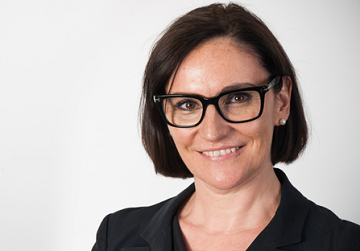Mencap on the inclusion of people with learning disabilities in the workplace
- 8 Min Read
Angela Buxton People Director at Mencap joined HRD Connect to talk about Mencap’s journey towards the inclusion of people with learning disabilities in the workplace. Earlier this year, you shared your big five year plan towards a world where people with learning disabilities are valued equally – how has this developed and progressed in the […]
- Author: Unzela Khan
- Date published: Jun 28, 2017
- Categories

Angela Buxton People Director at Mencap joined HRD Connect to talk about Mencap’s journey towards the inclusion of people with learning disabilities in the workplace.
Earlier this year, you shared your big five year plan towards a world where people with learning disabilities are valued equally – how has this developed and progressed in the last few months?
I really wanted to focus on a couple of key parts of that plan, which we are launching quite soon. One of them is around the employment of people with learning disabilities. Only about 6% of people with learning disabilities that can work, are actually in employment. Of course, having a job is hugely valuable for everyone, it’s the way you make friends, earn money and get independent, leave home and are able to have a good social life. Unfortunately, few people with learning difficulties actually get into paid employment. A really big focus for that big plan is to significantly increase the number of people in employment. In doing that, we need to work with employers to increase their confidence about welcoming people with learning difficulties in the workplace. They need to understand how they can get the most out of people with learning disabilities. It does involve reasonable adjustments, just as it does for any other disability, but with those in place, we believe people with learning disability make fantastic employees.
We need to break down some barriers and perceptions around what people are capable of and also provide practical help and support to a much wider group of organisations from across all different sectors to think about how they can promote their roles to this community.
One of the key things we are launching quite soon is a new apprenticeship scheme, which is designed specifically for people with learning disability. We have just been accredited as an apprentice training provider. What we want to do is partner with some really big organisations across different sectors and for them to try using some of these apprentice roles for people with learning disabilities. It is a really great way of helping the organisation understand learning difficulties more. But as I said, the best outcome for the organisation is the commitment they will receive from people with learning disabilities, they are a really loyal group of employees, they tend to have very little sickness and those kind of disciplinary issues, they are really committed. We think, having this apprentice programme will help organisations to take that first step towards being a much better and diverse employer.
Read about Mencap’s transformational journey
Since the launch of the plan, how have you encouraged employees to co-operate and remain engaged with the changes?
We do a lot of engagement with all of our colleagues around the country on the big plan, because they were a really big part of putting the priorities together and for choosing those priorities that ended up being part of the big plan. We have wanted to make sure that they feel very engaged on the work that is happening in all of the five key areas and for them to keep having a role into the decisions we make about that work, and its evaluation.
Our way is that we have what we call our organisational conversations where we invite all colleagues on a particular day or on a particular month to think about a set of questions in relation to one of the strategic priorities. One of the more recent ones we did was on a health priority. This is where we are trying to tackle in the NHS because we found that people with a learning disability often would receive much worse support than other people. We asked a set of questions from all of our colleagues and we encourage them to tweet, to go on Yammer, to post pictures and videos of having these conversations and involving the people we support in them as well.
We are really getting a sense of direction and purpose from our front line and from people across our roles, about those particular strategic priorities. We are encouraging particularly those who directly support people with a learning disability to share the stories from the experiences they’ve had of supporting people who go to the GP or go to hospital and the kind of barriers they face when they’ve done that.
Turning an organisation’s weaknesses into future capabilities can be very powerful, how do you start this process?
Well that was a particular process we followed. Nearly four years ago, with the new Chief Executive in place we wanted to really address what we felt were the cultural weaknesses in the organisation. It was not a collaborative organisation at the time. People were very much focussed on their one area of work. We also felt the organisation’s expertise in relation to learning disabilities were not strong enough ‘real experts’ in learning disabilities, even though our strap-line is ‘the voice of learning disability’ we were looking at our key weaknesses, where we can improve, and how can we turn our weaknesses into something we are amazing at, to build them into capabilities.
This was a process which we partnered with RBL, Dave Ulrich’s firm. We followed one of their key processes which is exactly that, think about the things you want to be really good at, think about the culture you want and put that into a set of capabilities that you build amongst your colleagues.
We decided that we wanted one of our capabilities to be collaboration, and then we put in place a range of structural or cultural elements whereby we made sure our colleagues were collaborating. We make sure that we reward collaboration and highlight where good collaboration isn’t happening to make sure we don’t condone that.
So we did a lot of work around making sure that it was very clear what the expectations were of colleagues and how we expect them to collaborate. This is not just internally, but also externally, so we put a lot of effort around making sure that if you came across a Mencap person you would think they were really collaborative.
The other capabilities we chose was around being that expert in learning disability. We’ve undertook a range of programmes and raised everyone’s awareness more internally about learning disability and to give them access to resources which means they can be aware of the latest policies and research areas around learning disability. We really encourage staff to go in and up their knowledge. We use Yammer a lot to do that which is great, easy access and good for everyone to get on to and really learn from each other.
So that’s an example of two capabilities that in the past were weaknesses, but we have built them into strengths.
Earlier this year, you stated that to be an effective HRD, a partnership with the CEO is necessary – how can companies transition towards a more people focussed partnership?
The reality is that it is very much dependant on who the CEO is. They come in all shapes and sizes and bring very different priorities with them. I was very lucky as an HR director to be working with a CEO who absolutely starts with the people in the organisation. So it wasn’t as though I had a massive challenge to sell my ideas around how we can really maximize the talent of our people in all of our strategic work.
I think in organisations where the chief executive isn’t starting on that point makes it harder for the HR director. I would very much recommend partnering with an organisation, there are a lot of consultancy firms out there that are very HR focussed. Perhaps that’s a good way of challenging those CEO’s who aren’t particularly people focussed. If they are driven by business results and the financials, then all the research shows that if you get your employee population engaged, involved and energised by what you are doing then your business results will be that much better so it makes business sense as well as people sense.
When transforming an organisation’s strategy – how can companies ensure their employees stay engaged?
The key thing is to involve them right from the start – we have all worked in organisations where you just suddenly get an email saying this is the organisational strategy, here you go have a read. It can be quite hard to feel connected to it unless you feel you have had some involvement in shaping it.
We knew as an executive team, some of the broad areas we thought the big plan would focus on, we then went up to colleagues and said what do you think? You are the experts, you will be working across all of the different areas or work, what do you think are the priorities for people with learning difficulties?
Right from the start we were able to engage in people in the thought process behind strategy development. Once we had published what the big plan was going to be, people could say they really influenced that.
We then kept people engaged on how the work was going and what we were learning – you just need a narrative because people are really interested.
If you make time to engage people in that work, we have found people are so interested and really keen to get involved. Exec teams just need to make the time to listen.









